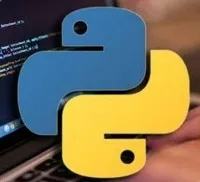
When it comes to crunching statistics, the R programming language reigns supreme. In the field of data science, it is by far the most popular language. R programmers have been in high demand since the beginning of this decade, and the language remains popular as a primary tool for data scientists. R is useful in many contexts, from programming to commercial analysis to statistical reporting to basic scientific study. Because of that, its popularity among commercial enterprises has grown. An S dialect is called R. After S was established, the R language quickly gained popularity. R was developed by Ross Ihaka and Robert Gentleman of the University of Auckland's Department of Statistics. The initial public announcement of R was made in 1993. Martin Mächler played a pivotal role in 1995 when he persuaded Ross and Robert to release R under the GNU General Public License. R version 1.0.0 was made available to the public in the year 2000.
S is a programming language created by John Chambers and colleagues at AT&T's former Bell Telephone Laboratories. S was first developed in 1976 as a Fortran library for use within an organization's own statistical analysis processes. Since the early 1990s, the development of the S language has taken several detours. The S programming language was licensed to StatSci (now Insightful Corp.) by Bell Labs in 1993. At present, TIBCO is the only proprietor of the S language. S was awarded the coveted Software System Award by the Association for Computing Machinery in 1998. The S language does not originate from the realm of traditional programming but rather data analysis. S's exclusivity to a commercial package was one of its major drawbacks, whereas R is freely available to anyone interested in learning how to use it.
R's syntax is extremely close to that of S. When comparing R's inner workings to those of the original S language. R can be used on practically any modern hardware or operating system. The default graphics system in R gives you extensive control over your plots and graphs. Complex and sophisticated displays of high-dimensional data are possible with other modern graphics tools like lattice and ggplot2. In keeping with the original S ethos, R offers a language that is functional for interactive work and also includes a robust programming language for creating new tools. It's simple to make objects, functions, and packages in R. It can be used on any computer system. It's platform-agnostic because of this. The mean, the mode, and the median are the most often used terms in elementary statistics. We collectively refer to these as "Measures of Central Tendency." The R programming language makes it simple to calculate averages. Graphical maps, Mosaic plots, and Biplots are just a few of the plot types that may be created with the tools provided by R. Probability distributions of many kinds, including the Binomial Distribution, the Normal Distribution, the Chi-squared Distribution, and many others, are simple to work with in R. The extensive library support is a key component of R.
More than 10,000 R packages can be found in the CRAN (Comprehensive R Archive Network) archive. In November 2015, R's ddR and multidplyr packages were published, which can be used for distributed programming. Commonly used integrated development environments (IDEs) for R include R Studio, Rattle, and Tinn-R, among others. Data that ends with ".r" R is a slow programming language compared to others like Python and MATLAB.
You can run any r file using below command.
R file_name.r
Both R and Python offer useful features that set them apart from one another. If statistical calculations and data visualization are areas of particular interest to you in data analysis, R may be a suitable fit. However, Python is the superior option if your goal is to work in data science. It's great for AI, deep learning, and other projects with large datasets. Python is a very versatile language, and not just for R. R is a statistical programming language used for graphical data analysis and presentation. Examples include data analysis, data visualization, and data manipulation. CRAN, short for Comprehensive R Archive Network, is where you can download the main R system. There are several packages available on CRAN that can be utilized to expand R's capabilities. More than 4,000 user- and developer-created packages can be found on CRAN. The R community consists of R users from all over the world who develop and maintain packages for the CRAN repository.
2000 - R version 1.0.0 was released to the public.
2003 - The R Foundation was established to maintain and manage the R software copyright as well as to give assistance for the R language project.
2004 - R version 2.0.0 is released.
2009 - The R publication is founded as an open-access publication for statistical computing and research.
2013 - R version 3.0.0 is released.
2020 - R version 4.0.0 is released.
Limitation of R language:
- Steep Learning Curve
- Hungry for Physical Memory
- Slower execution
- High pressure to memory management







